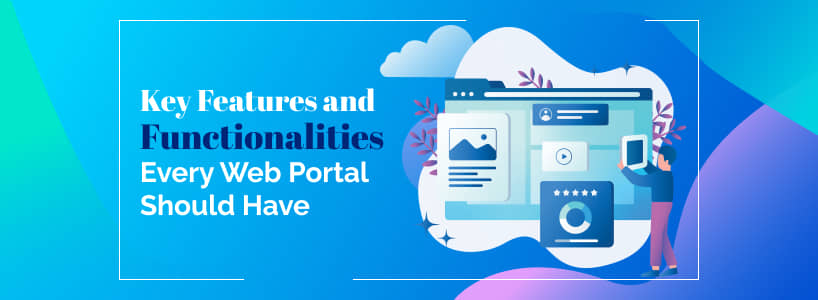In today's digital age, web portals have become a cornerstone for businesses and organizations to connect with their target audience. A well-designed portal acts as a central hub, streamlining communication, information sharing, and specific tasks. But what makes a web portal successful? Here, we explore the key features and functionalities that every web portal should possess.
1. User-Friendly Interface and Navigation:
First impressions matter. An intuitive and user-friendly interface is paramount for a positive user experience. The layout should be clean and uncluttered, with clear navigation menus and easy-to-find search bars. Think of it like a well-organized store users should be able to find what they need quickly and effortlessly.
2. Personalized User Experience:
Personalization goes a long way in keeping users engaged. Web portals can allow users to create profiles, set preferences, and receive targeted content relevant to their needs. This can be achieved through features like customizable dashboards, content recommendations, and personalized notifications.
3. Robust Search Functionality:
A powerful search engine is a must-have for any web portal. Users should be able to find the information they need efficiently using keywords, filters, and advanced search options. Consider implementing features like faceted search and auto-complete suggestions for a seamless search experience.
4. Secure Login and User Management:
Security is paramount, especially when dealing with sensitive information. Web portals should have secure login protocols, with features like two-factor authentication and user activity logs. Role-based access controls can further enhance security by granting users access only to the information and functionalities relevant to their role.
5. Self-Service Tools and Resources:
Empowering users to find answers and complete tasks independently is key. Web portals can offer self-service tools like FAQs, knowledge bases, downloadable resources, and online tutorials. This reduces reliance on customer support and streamlines user workflows.
6. Content Management System (CMS):
For portals with frequently updated content, a user-friendly Content Management System (CMS) is essential. This allows authorized users to create, edit, and publish content without needing extensive technical knowledge. A good CMS also provides features for content scheduling, version control, and content tagging for better organization.
7. Integration with Existing Systems:
Modern web portals should seamlessly integrate with existing enterprise systems like CRM, ERP, and marketing automation platforms. This eliminates data silos and ensures a unified user experience across different applications.
8. Mobile Responsiveness:
With the ever-increasing use of mobile devices, a responsive web design is no longer an option, it's a necessity. The web portal should adjust its layout and functionalities to display optimally on desktops, tablets, and smartphones, ensuring a smooth user experience across all devices.
9. Analytics and Reporting:
Data is king! Web portal analytics provide valuable insights into user behavior, content engagement, and overall portal performance. By tracking key metrics, administrators can identify areas for improvement and optimize the portal to better serve its users.
10. Secure Communication Tools:
Effective communication is vital. Web portals can facilitate secure communication through features like internal messaging, discussion forums, and announcement boards. This fosters collaboration, knowledge sharing, and a sense of community among users.
In Conclusion:
By incorporating these key features and functionalities, Web Portals can become powerful tools for enhancing user experience, streamlining workflows, and achieving organizational goals. Remember, a successful web portal is not just about technology, it's about creating a user-centric platform that empowers users and fosters meaningful connections.

